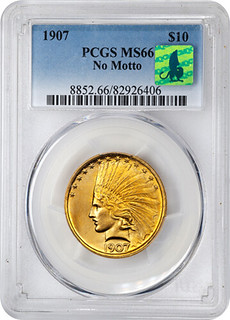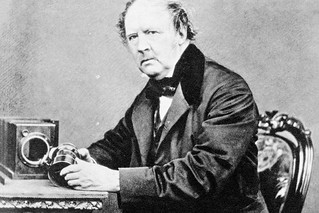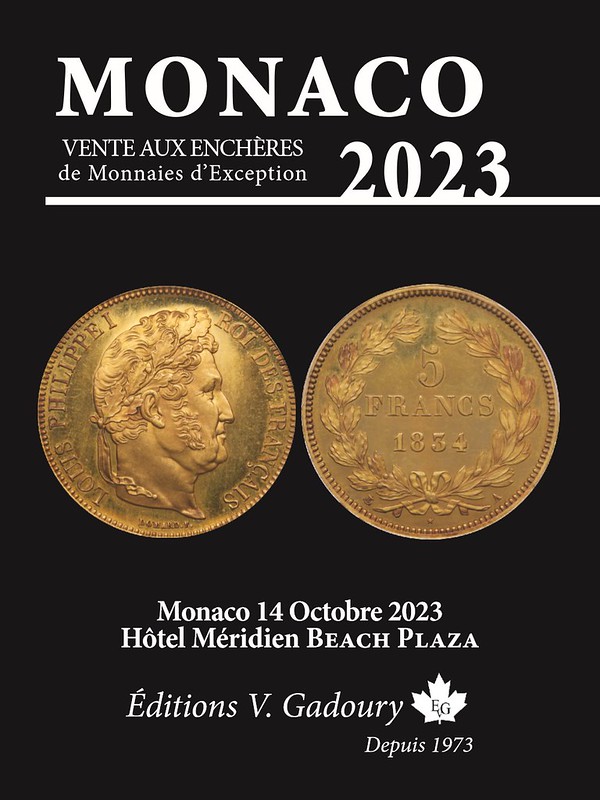
PREV ARTICLE
NEXT ARTICLE
FULL ISSUE
PREV FULL ISSUE
NOTES FROM E-SYLUM READERS: SEPTEMBER 17, 2023
Bargello Museum Medal Catalog Sought "I am trying to track down two Renaissance era medals reported several decades ago to be in the collection of the Bargello National Museum of Florence, Italy. I am wondering if their extensive medal collection has ever been published. If so, it would help to have the title and if possible where a copy might be located (such as the ANS or ANA libraries). Thanks in advance for any suggestions readers might be able to offer." Can anyone help? -Editor
On Frozen Dates "At least a few crude 19th century India native states coins bore dates that never got changed presumably despite known subsequent strikings or castings over a period of years, and thusly were catalogued as bearing a "frozen date." I've only collected coins of Indian native states and independent kingdoms coinciding with the British Raj from the mid-century on (I have several hundred different), but possibly there were some earlier examples, too. Scanning my old KM, see India Princely States - Nawanagar KMs 1-14, and Porbandar C*30-38. (*C=Craig) "Some coins had frozen regnal years, for some reason, but progressing (Muslim) calendar dates. Like, Awadh early 19th century. Maler Kotla state (part of CIS - Sutlej States) made coins with "frozen" regnal years, but no other date."
To read the earlier E-Sylum article, see:
Certifying Grade vs Genuineness
"The problem with this and most such services is that there is no guarantee the article is genuine. Correct me if I am wrong. You may own a "Certified" uncirculated coin, but it was made for collectors in a private lab last week. "How can collectors "guarantee" the genuineness of any specific piece? Your comments or reader's comments would be appreciated." The Collectible Market Qualified service is a fourth-party grader, reviewing and opining on the grade assigned by a third-party grading service on their slab. But TPGs won't grade and slab a piece not believed to be genuine. So CMQ is providing a grading opinion only. -Editor
To read the earlier E-Sylum article, see:
On Catalog Numbering Systems
"In the August 27th E-Sylum, the
"In writing
"I've noticed my numbering system being used with the prefix
To read the earlier E-Sylum article, see:
Calotype Images in Numismatics? I came across an article this week discussing photography pioneer William Henry Fox Talbot and his calotype process. -Editor
Curious, I reached out to numismatic biblio experts Kolbe & Fanning to see if they were aware of any calotypes in numismatic literature. -Editor David Fanning writes: "No, I don't know of any. I think this article overstates the degree to which Talbot was forgotten. He's mentioned in my article draft three times, despite not doing anything numismatic as far as I know of. I have a reprint of his Pencil of Nature, which is a great book. Talbot produced the world's first photographic negative, so he's a major figure." George Kolbe writes: "Ditto, especially concerning the notoriety of Talbot, or lack thereof. Swann Galleries well-known pioneering series of photographica auctions celebrated Talbot and his famous works. I never found any numismatic images in their sales."
To read the complete article, see:
Wayne Homren, Editor The Numismatic Bibliomania Society is a non-profit organization promoting numismatic literature. See our web site at coinbooks.org. To submit items for publication in The E-Sylum, write to the Editor at this address: whomren@gmail.com To subscribe go to: https://my.binhost.com/lists/listinfo/esylum All Rights Reserved. NBS Home Page Contact the NBS webmaster 
|


